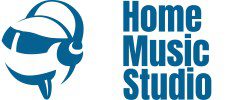EQ or Equalisation Basics and Mixing…
So you’ve heard the phrase EQ used a lot, but what does this mean?
EQ is short for Equalisation, and is used to boost or cut specific audio frequencies, to enhance or reduce parts of the sound.
You may have seen multi band equalisers on HI-FI systems – these can range from fairly simple 6 band, right up to 30+ band. Of course the 6 band offers a broader range of adjustments, whilst the higher bands would let you tailor the sound much more specifically.
Probably the easiest form of EQ to understand the concept would be simple Bass and Treble controls, found on most systems, including your car, for example.
The bass control would focus on the lower end of the frequency (kick drums, bass lines etc.), whilst treble at the other end (some vocals, high hats etc.)
Equalisation won’t actually change a sound – you couldn’t make a hi-hat sound like a kick drum, but you could take all the oomph out of a kick, or make a kick sound really powerful.
Using EQ, even subtly (in fact you should probably always use it subtly), can provide the space each sound needs to sound good in your mix.
Imagine a lane on a motorway (or highway) being a small frequency range, bass for example would be a good one – say 70 to 150 Hz. Each car below represents a sound being played in that range.

As you can see, they are nicely spaced and will sound good.
However now look at a congested frequency range:

There are now lots of ‘crashes’ happening as sounds are competing for the same frequency range, and this will start to sound terrible.
Some subtle EQ adjustments on certain elements here will shuffle them out of range of the other sounds, and create the space needed for each sound.
Hope this helps you understand this concept a little better and contributes to better mixing.

Recent Comments